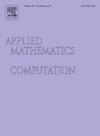基于深度学习的动态初始保证金计算和保证金值调整
IF 3.4
2区 数学
Q1 MATHEMATICS, APPLIED
引用次数: 0
摘要
目前的工作解决了在交易对手信用风险中训练神经网络进行动态初始保证金(DIM)计算的挑战,这是一项传统上由通过嵌套蒙特卡罗(MC)模拟生成训练数据集相关的高成本所负担的任务。通过将初始市场状态变量压缩成一个输入向量,通过利率模型和当前利率期限结构的简约参数化来确定,我们构建了一个训练数据集,其中标签是初始保证金(IM)变量的单个MC路径生成的未来实现。由于DIM被定义为IM的条件期望,因此IM可以理解为DIM的有噪声和无偏样本,允许将深度学习回归技术应用于其计算。为此,采用多输出神经网络结构将DIM作为时间相关函数处理,便于跨监测时间网格进行训练。这种方法具有显著的优势:它减少了单个MC执行的数据集生成成本,并通过初始市场状态变量参数化神经网络,从而避免了重复训练的需要。实验结果证明了该方法在不同利率模型(Hull-White和Cox-Ingersoll-Ross)和投资组合复杂性下的收敛性和鲁棒性,验证了其在更现实场景下的一般适用性和效率。本文章由计算机程序翻译,如有差异,请以英文原文为准。
On deep learning for computing the dynamic initial margin and margin value adjustment
The present work addresses the challenge of training neural networks for Dynamic Initial Margin (DIM) computation in counterparty credit risk, a task traditionally burdened by the high costs associated with generating training datasets through nested Monte Carlo (MC) simulations. By condensing the initial market state variables into an input vector, determined through an interest rate model and a parsimonious parameterization of the current interest rate term structure, we construct a training dataset where the labels are future realizations, generated with a single MC path, of the Initial Margin (IM) variable. Since DIM is defined as the conditional expectation of IM, the latter can be understood as noisy and unbiased samples of DIM, allowing the application of deep learning regression techniques to its computation. To this end, a multi-output neural network structure is employed to handle DIM as a time-dependent function, facilitating training across a mesh of monitoring times. This methodology offers significant advantages: it reduces the dataset generation cost to a single MC execution and parameterizes the neural network by initial market state variables, obviating the need for repeated training. Experimental results demonstrate the approach’s convergence properties and robustness across different interest rate models (Hull-White and Cox-Ingersoll-Ross) and portfolio complexities, validating its general applicability and efficiency in more realistic scenarios.
求助全文
通过发布文献求助,成功后即可免费获取论文全文。
去求助
来源期刊
CiteScore
7.90
自引率
10.00%
发文量
755
审稿时长
36 days
期刊介绍:
Applied Mathematics and Computation addresses work at the interface between applied mathematics, numerical computation, and applications of systems – oriented ideas to the physical, biological, social, and behavioral sciences, and emphasizes papers of a computational nature focusing on new algorithms, their analysis and numerical results.
In addition to presenting research papers, Applied Mathematics and Computation publishes review articles and single–topics issues.

 求助内容:
求助内容: 应助结果提醒方式:
应助结果提醒方式:


